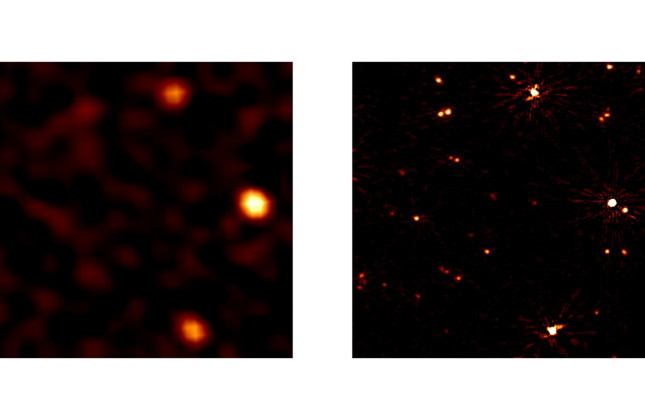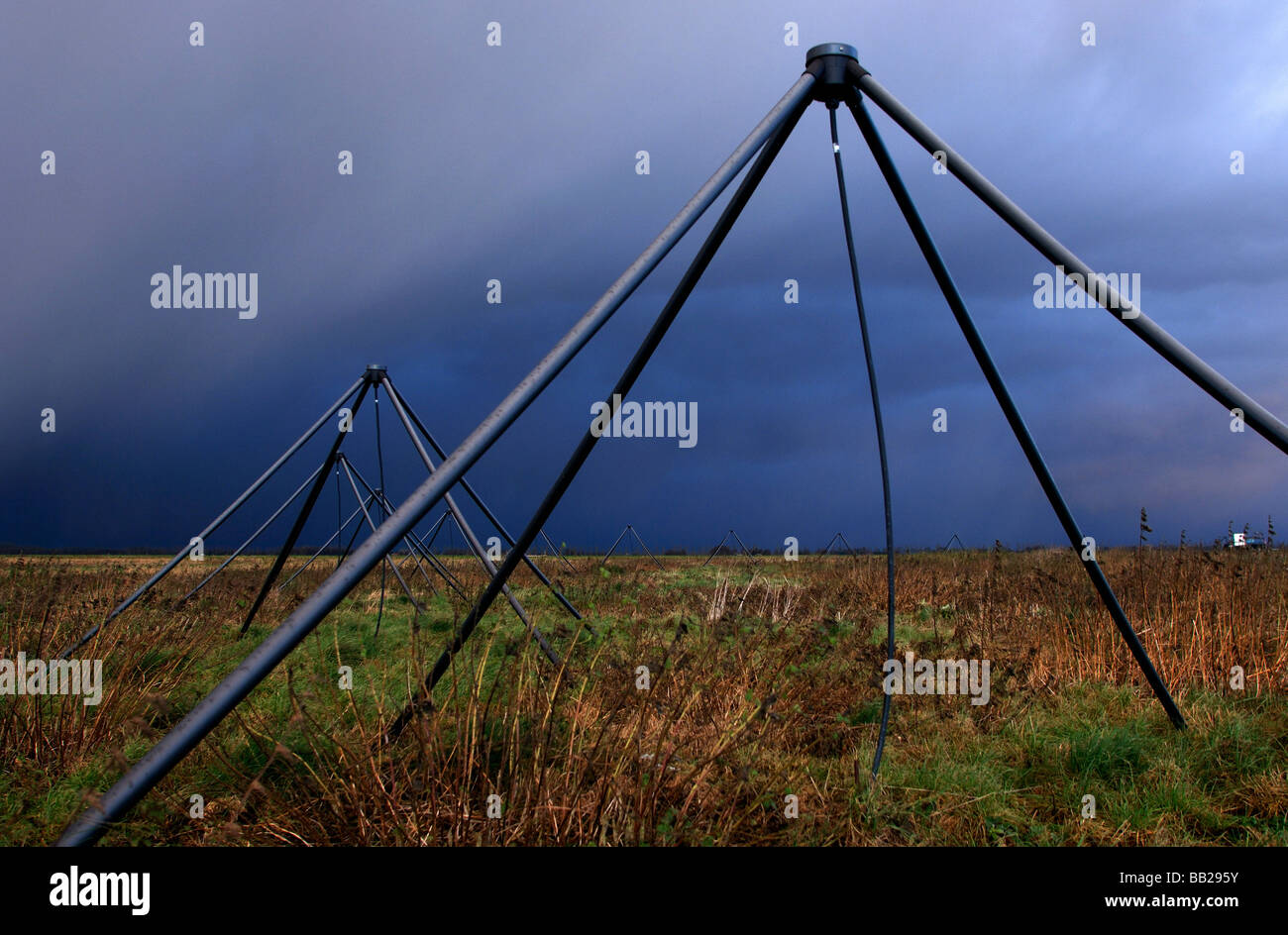Netherlands Research School for Astronomy (NL)
The astronomical institutes at the universities of Amsterdam, Groningen, Leiden and Nijmegen together form NOVA
5.6.24
An international team of researchers led by astronomers from Leiden University (NL) has produced the first sharp radio maps of the universe at low frequencies. Thanks to a new calibration technique, they bypassed the disturbances of the Earth’s ionosphere. They used the new method to study plasmas from ancient black hole bursts. Potentially, the might technique be useful for finding exoplanets that orbit small stars. The researchers report their technique in the journal Nature Astronomy.

Old [left] vs new [right]. LOFAR/Groeneveld et al.
The technique allowed astronomers to take clear radio images of the universe at between frequencies 16 and 30 MHz for the first time. This was thought to be impossible because the ionosphere, at about 80 kilometers above the Earth, interferes with observations at these frequencies.
The researchers used the LOFAR telescope in Drenthe, the Netherlands.

LOFAR telescope in Drenthe (NL)
This is one of the best low-frequency radio telescopes in the world. To test their technique, they studied a number of galaxy clusters that had previously only been studied in detail at higher frequencies.
Glasseses and Glasseses and Glasses (Texes)
Thanks to the new images, it appears that the radio emission from these clusters is not equally distributed across the cluster, but rather there is a spot pattern. “It’s like putting on a pair of glasses for the first time and no longer seeing blurred,” said research leader Christian Groeneveld (Leiden University, the Netherlands).
The motivation for the research was that at high frequencies, around 150 MHz, many improvements in calibration had been made in recent years. “We hoped that we could also extend this technique to lower, frequencies below 30 MHz,” says the originator of the idea, Reinout van Weeren (Leiden University). “And we succeeded.”
At the moment, the researchers are processing more data in order to map the entire northern sky at the lower frequencies.
According to the researchers, the new calibration technique makes it possible to study phenomena which were previously hidden. It might be used to detect exoplanets orbiting small stars. And, Groeneveld concluding, “There is, of course, a chance eventually we will discover something unexpected.
See the full article here .
Comments are invited and will be appreciated, especially if the reader finds any errors which I can correct.
five-ways-keep-your-child-safe-school-shootings
Please help promote STEM in your local schools.
NOVA: collaboration
The astronomical institutes at The University of Amsterdam [Universiteit van Amsterdam] (NL), The University of Groningen [Rijksuniversiteit Groningen] (NL), Leiden University [Universiteit Leiden] (NL) and Radboud University Nijmegen [Radboud Universiteit] (NL) together form NOVA. NOVA closely collaborates with the two other research institutes that are active in the field of astronomy in the Netherlands: SRON Netherlands Institute for Space Research and ASTRON-Netherlands Institute for Radio Astronomy [Nederlands Instituut voor Radioastronomie] (NL).
Collaboration and coordination of all partners in Dutch astronomy takes place within the Astronomy Council (RvdA) and the creation of decadal strategic plans and midterm updates by the RvdA.
NOVA astronomers rely heavily on the world-class facilities of European Southern Observatory [La Observatorio Europeo Austral] [Observatoire européen austral] [Europäische Südsternwarte](EU)(CL), most notably the VLT telescopes and the ALMA array.


A large fraction of the instrument projects that NOVA participates in are targeted at these facilities, as well as the future Extremely Large Telescope.


